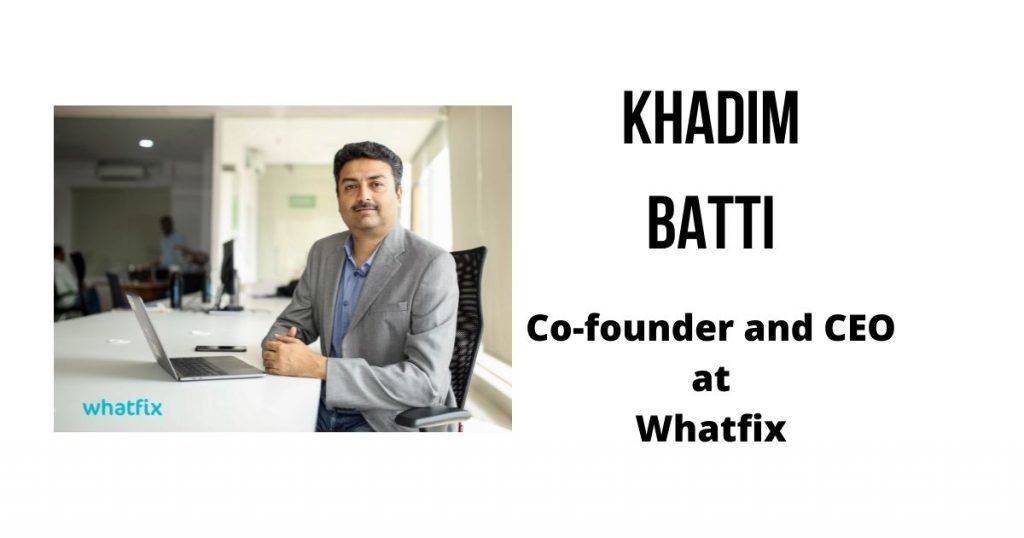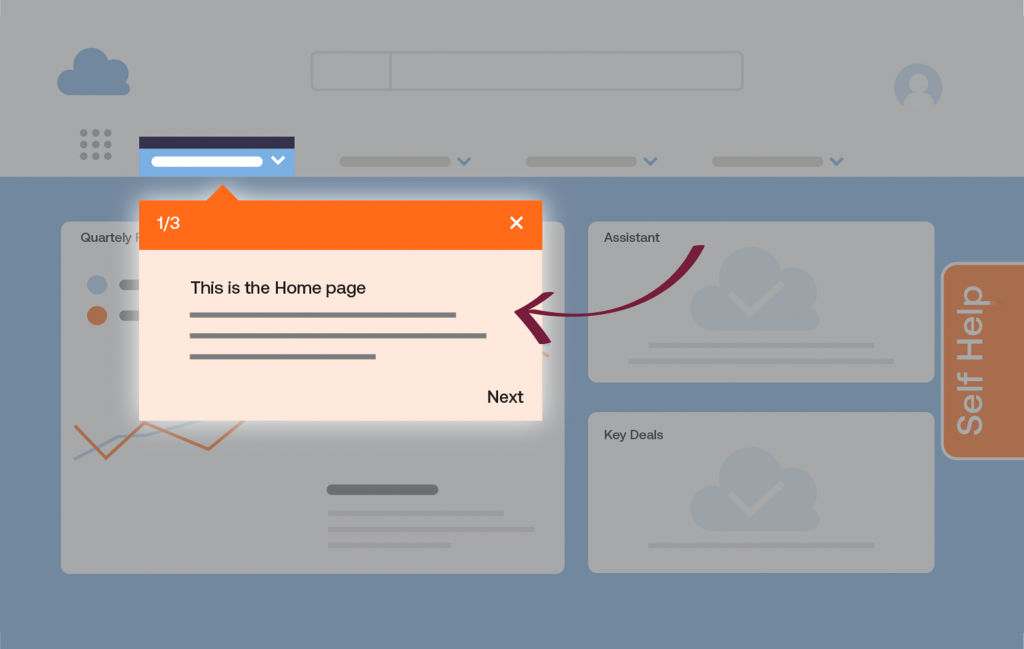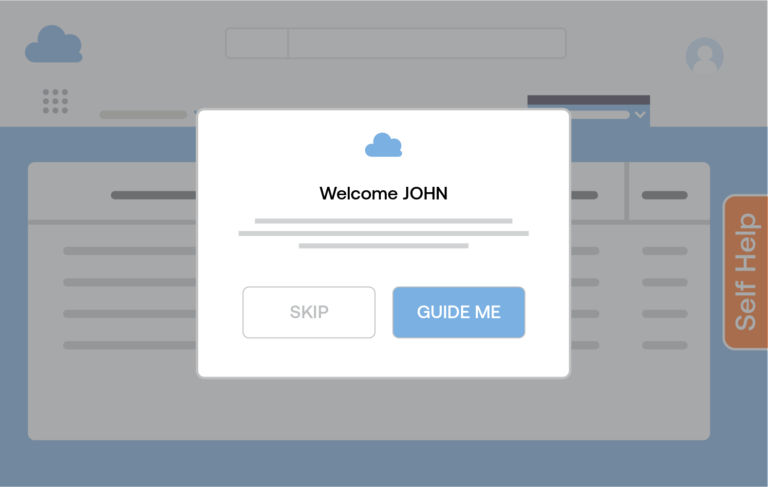For any business, creating a software in a new category isn’t an easy thing. Not only it has to explain to the world why the need for the software exists, but the business also has to find customers at the same time as they may not even believe that the problem exists. But Whatfix has been able to do exactly that. As a pioneer in the Digital Adoption Platform (DAP) software space, it has single-handedly created the category to help users understand how to use a particular software without any manual intervention. Today, the India-based company is present across the globe and is among the top Indian SaaS companies to watch out for. So, we were glad to talk to its co-founder and CEO, Khadim Batti about the company’s initial days, its evolution, and what’s next.
PS: the interview has been edited for the sake of brevity.

Table of Contents
1. Before we talk about Whatfix, could you share your journey into the world of SaaS?
I was always driven by the potential impact of what software platforms can bring to any business. Having spent nearly 10 years at Huawei, I felt confident that the value-based model of SaaS was here to stay. Vara, my co-founder and CPTO of our company, and I have worked together for many years. We shared a common passion for building a global product company from India with innovation at its heart. We took our first bet on enabling SEO (Search Engine Optimization) for small businesses.
We saw immense improvement in the adoption of the product. The traction increased significantly and we got numerous requests from customers to build this capability for other solutions too. This made us take the challenge of ‘Digital Adoption’ seriously and inspired us to run more experiments. We kick-started a free, community-based model that enabled everyone to create flows on any digital platform or website. The response was phenomenal.
2. What gaps did you see in the market before launching Whatfix?
The Whatfix journey began in 2011 when Vara and I decided to start our marketing DIY product called SearchEnabler, targeting SMBs. This was an on-demand SaaS tool that businesses could use to implement recommendations for enhancing their organic search visibility. While SearchEnabler received good traction and we were able to gather about 100 customers within a year, we faced a newer challenge – the product was not being adopted effectively as most customers wanted extensive support and hand-holding. Building smart flows to solve this core pain point led to the inception of Whatfix.
3. How has Whatfix evolved since its inception in 2014?

Our growth has been on a strong upwards curve, with Whatfix being a global leader in the DAP category today. Over the past year, our customers have shifted their entire workforces to remote working, necessitating them to find new ways to remotely engage with their employees. Due to this, in-app engagement with employees by our customers through Whatfix has increased by 150 percent every month, as compared to the pre-Covid period. Additionally, we have seen a 2x increase in revenue. This was strengthened through the addition of over 130 enterprise customers including Center State Bank, Vivial, AkzoNobel, Ciena, Aurecon, and more, adding additional support for desktop and mobile applications, in addition to browser applications. Our team has simultaneously grown with over 260 new hires globally, bringing the total number of employees to 630.
4. How many customers do you have now? Are there any specific types of companies that use Whatfix or its industry-agnostic?
Whatfix has been continuously innovating and supporting the evolving needs of our customers. Our investments in technology and expansion into new markets have enabled us to equip our customers with the tools they need to navigate their digital transformation journey.
We saw an uptick in customer usage of our Digital Adoption Platform and have seen a 2x increase in revenue. This was bolstered through the addition of over 130 enterprise customers including Center State Bank, Vivial, AkzoNobel, Ciena, Aurecon, and more, adding additional support for desktop and mobile applications, in addition to browser applications.
5. Which are the biggest markets for Whatfix?
Whatfix has a unique advantage in being able to integrate our solutions with almost any form of application. We now have the capability to focus not just on our existing customers, but expand the scale of our offerings to provide our services to enterprise organizations. We have a strong presence in US and EU markets and now expanding our presence in ANZ, SEA regions. We have also recently expanded our product footprint to desktop and mobile applications.
6. While Whatfix may have pioneered the digital adoption software space, today there are a lot of players. How do you stand out?
We are a digital adoption platform that offers in-app employee training for software solutions across the business. Whatfix modules are customized as per customer needs; easy-to-understand contextual guidance and step-by-step instructions help employees understand solution functionalities and onboard quickly. By boosting adoption during this manner, Whatfix helps its customers achieve ROI faster on their enterprise software investment.

Each enterprise technology implementation may be a multi-million-dollar spend for larger companies. We help ensure our customers’ applications are getting used in the absolute best way. Set up in 2014 with three people during a single office, Whatfix today employs 630+ people in six offices across the world. We service around 500 customers; 100 of those are Fortune 1000 companies. Hence, there’s no denying that we are moving at a very fast pace. Quite early in our remarkable journey, Whatfix saw the necessity for CRM technology to know and meet the wants of a good range of consumers.
Whatfix’s whole narrative is made around customers, and customer experience is paramount to us.
7. Could you shed a light on your marketing strategy?
We have realized that a product marketing team is essential in order to drive demand and awareness of our products. There were some tell-tale signs that indicate the need to hire our first product marketer. The key driver of these signs is scale. Once product- and market-fit is detected, it’s a good rule of thumb to have a dedicated business unit to own product marketing. The first step after deciding to have a dedicated team is to get that team staffed properly. In light of the highly cross-functional nature of the role, I would recommend hiring hybrids – a combination of a product marketer and a growth marketer.
Once you are clear about the reasons you have to decide between hiring a team of full-stack product marketers or a team of specialists. Specialists could be focused on competitive intelligence, GTM tactics, enablement, etc. There is no simple approach to hiring full-stack PMMs versus specialists. All you need to do is, make a conscious choice and not expect specialist work from a generalist or vice versa. It is worth noting that we need a version that resonates with our buyers, and a modified version – as opposed to a radically different one – that resonates with our users.
8. How has the ongoing pandemic affected Whatfix – both in terms of users of your software and the business itself?
The COVID-19 pandemic led to an accelerated pace of digital transformation across industries. A great part of digital transformation is the adoption and optimal utilization of critical platforms and tools. Whatfix plays a significant role in ensuring that an organization’s entire employee base is onboarded and effectively using the tools at their disposal. Our SaaS offering is helping businesses increase the output of companies while reducing the costs of tech enterprise tools. As a company with the majority of its employees based in India yet selling to global organizations, we were well-equipped to keep everything running smoothly from customer support and sales perspective.
As organizations navigate their digital transformation journey and make significant investments in software solutions, Whatfix serves as a protection for those investments.
In the current remote working environments, users no longer can turn to the person on their left, or easily reach out to a colleague to walk through sophisticated solutions. At such a time, it becomes even more critical that we enable independent production and make everyone more efficient to sustain business momentum. As organizations navigate their digital transformation journey and make significant investments in software solutions, Whatfix serves as a protection for those investments.
9. What’s next for Whatfix? Any new features that users should look forward to, or any acquisitions in the pipeline?
Whatfix is on a strong growth trajectory and is a critical part of India’s startup ecosystem. With the $90million Series D funding round led by SoftBank Vision Fund 2, Whatfix’s valuation has increased 3x in the last 15 months. We are using the funds to continue growing our stronghold in the US market while also accelerating global expansion into new markets such as the Asia Pacific and Europe. Over the last year, we have added 130+ enterprise customers including Center State Bank, Vivial, AkzoNobel, Ciena, Aurecon, and more, adding additional support for desktop and mobile applications, in addition to browser applications.

As remote or hybrid work becomes the norm, Whatfix’s game-changing Digital Adoption Platform has enabled organizations to drive speed and efficiency in their adoption of new technology offerings. As an Indian SaaS startup in the Digital Adoption Platform space, we are excited to continue our leadership in this landscape.
Related read: Indian SaaS Unicorns: A Look At The Companies That Are Taking Over The World
We have recently acquired a company that provides tech-led presentations to help digital adoptions in enterprises faster and is an organic extension of what Whatfix does. By incorporating Nittio Learn’s capabilities we will advance the company’s application training capability by making learning more personalized, adaptive, and rich.
10. Could you share your biggest learnings of building a global product out of India?
A lot of investors want to invest in Indian SaaS companies. The real difference if the company is built in India is the value they can add by doing more sales, marketing, and success from India. If they are only focused on product and engineering, then every multinational has a shop here.
I believe, sales, marketing and other departments have to evolve based on the business needs and market demands rather than only focusing on location. At Whatfix, we have scaled new logos from India and expansions in the region. Similarly, strategic accounts and customer success are being driven from India.
11. What are your favorite SaaS software out there?
In times of remote and hybrid work, collaboration becomes very important. I like Slack and Microsoft Teams as they are very useful to connect with the team. Voice analytics tools like Chorus helps in improving productivity and enablement for sales and marketing folks.






